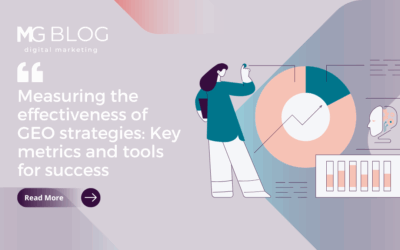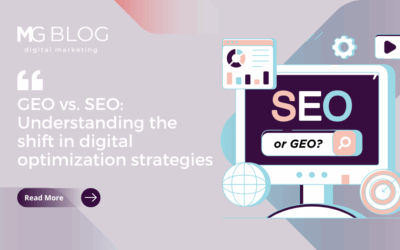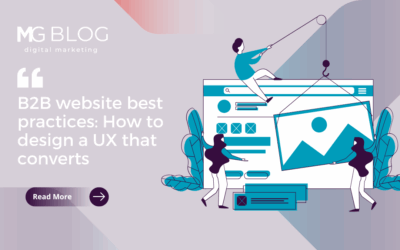Peer into the mind of a CEO and you’ll see a lot of complexity, some chaos and, above all, an unyielding focus. But, even the most focused CEOs are being challenged by today’s incredibly fast-moving technologies and ever-changing markets and consumer behaviors. How do CEOs and business leaders get their arms around it all?
To find out, we asked technology experts (some of whom are CEOs themselves) to help business leaders focus in 2016. What should they be paying attention to heading into the new year? What are the hot technology trends to watch in 2016?
More often than not, the prognosis fell into a few common categories, including continued focus on the five key areas of cyber security, productivity, personalization, customer experience and the sharing economy.
As CEOs take a strategic look at their businesses heading into 2016, and as they start to make their New Year’s resolutions, here are some leading thoughts on tech trends to consider:
Modernizing the Way We Work – Going Beyond Email
As a new breed of millennials enter the workforce, we need new ideas to work the right way. New research suggests that the business environment, across industries, is more competitive than ever. Only those companies poised to get the best performance out of their employees will come out on top. As the report states, 82 percent of employees are logging hours outside of standard business operations, but their productivity rates flatline due to inefficiencies.
“Eliminating wasteful meetings, shrinking overloaded email inboxes, finding a healthy work-life balance and effectively collaborating with colleagues are all possible with the right discipline and the right tools,” said Joe Staples, chief marketing officer at Workfront. “In 2016, we need to set and communicate company priorities so that everyone is working on the right projects at the right time.”
In the field of healthcare, the Affordable Care Act (ACA) has breathed new life into the area of telemedicine, which fits squarely into today’s triple aim in healthcare – quality, cost and access. Telemedicine is evolving in new ways – moving from hardware, video and peripherals to workflow and care coordination. As millions more Americans gain health coverage every year, the rapid adoption of telemedicine as a means to improve patient outcomes shows no signs of slowing down.
“In the past, telemedicine was seen as a ‘nice to have’ for many organizations, but in 2016 we will see this change,” says Mike Baird, CEO and Founder of Avizia. “The data is in and the promise that technology offers is clear. This is the year where telemedicine and medicine become one and the same.”
Hacking Goes Mainstream
As billions of sensors come online, as part of the Internet of Things, and more and more everyday devices go online – from connected household appliances to connected cars or medical devices – hackers will find a new frontier of opportunity. Largely considered the domain of IT departments, security is moving from the back room to the front lines of consumer and business applications, now touching consumers and businesses in ways like never before. Security concerns will increasingly encompass both the virtual and physical worlds
Mobile devices continue to overwhelm the workplace, presenting ongoing security vulnerabilities. At the same time, companies are rapidly embracing evolving technologies – whether cloud, open source or biometrics to name a few – challenging companies to keep pace with the security risks posed by these technologies.
We’re in the middle of a very long journey when it comes to cybersecurity — and a lot more work needs to be done so businesses can continue to reap the competitive advantages that technology brings without losing sleep over security.
For example, there’s an explosion happening today in biometrics security. As Rajiv Dholakia, VP of Products at Nok Nok Labs, told us, “Intel, Microsoft and multiple mobile OEMs (Samsung, Sharp, Fujitsu, Huawei, etc.) led the way in 2015 and major enterprises like Bank of America have deployments in full production. There is a proliferation in authentication methods and more of them are going mainstream including fingerprints, eye and face recognition. The question will become – after fingerprint, which modality will win out? There is furious experimentation in wearables like Apple Watch, and customers will have to navigate this complexity.”
Those Who Sit on a Gold Mine of Data Will Prosper
The data, not the algorithms, will differentiate companies. More and more, companies will develop purposeful strategies to chase, collect and analyze new data sets. The goal will be to figure out new and creative ways to tap new data sets to create a customized, automated customer experience.
“Data has become a tangible financial asset,” said Lukas Biewald, CEO of Crowdflower. “Companies with large, robust data sets are in a unique position to capitalize in this new data-hungry economy. In 2016, legacy companies that aren’t very profitable and possess large data sets may become more valuable and attractive acquisition targets than ever.”
What does this mean for the customer of a business? Through machine learning, companies will be able to develop new solutions and improve business performance to enhance the customer experience, making it more personal and value-driven. In 2016, business will continue to invest heavily in data collection and artificial intelligence (AI) to meet this demand. Biewald continued, “Without training data, algorithms can’t make confident business decisions. We still need humans in the loop to make models smart.” By investing in new data sets and AI, companies can create extremely tailored services for individuals that can be linked to commerce in a variety of ways.
Investing in Customer Experience Means Happy Customer, Happy Company
In this same thread, customer experience is central to any successful business. In 2016, corporations will be investing in new technologies to support their sales and marketing teams — fulfilling the needs and wishes of their clients in real-time, and ultimately padding their bottom lines with a real return on investment.
“Algorithms are entering the boardroom,” said Dan Graham, General Manager of Enterprise Systems at Teradata. “CEOs and investors will start talking deep analytics as core business goals.”
It is the analytics, both real-time and historical, that will power better customer experiences, whether that means delivering the right offers and products at the right time and right location to the right customer, or evolving a deep understanding of individual customer journeys to influence and change behaviors, but the emphasis on the customer experience does not stop there.
The healthcare market is also seeing a major shift in consumer perceptions and expectations, particularly with regard to employer-sponsored healthcare insurance.
“Since the implementation of the ACA, people have become more involved in their healthcare decisions, demanding plans that are transparent, easy to access and understand, and are affordable. In 2016, these expectations, and employee involvement in the health plan selection process, will become the norm,” states David Notari, CEO of Innovation Health.
Moving forward, companies will need to think about their employees in a new way, ensuring both their health and wellness are a part of the bottom line. Heading into the new year, it will be essential that employers consider employee expectations in the wake of the many health insurance options available to them.
A Shared Economy Continues to Spur Technological Breakthroughs
Businesses are finally starting to shed their myopic lenses to look beyond themselves, and understand the broad market view that can lead to better outcomes through sharing and collaboration. In today’s digital and connected economy, collaboration significantly increases the likelihood of innovation and technological breakthroughs. One example of this is in the area of open source software. Companies like Facebook, Google, Microsoft and even Tesla are open sourcing their most breakthrough technology innovations. The goal is to spur innovation by tapping into a world of developers and technologists greater than their own corporate world.
Elon Musk’s commitment of $1 billion to AI research funding is a great example. He and other tech luminaries launched a nonprofit called OpenAI focused on AI research, and they plan to share the technologies with the world. This type of forward thinking can lead to massive global breakthroughs across all industries including healthcare and education.
This sharing and collaboration is also happening at the personal level. Monetizing latent assets is a huge trend, as people look to expand their household income by sharing unused resources with their peers. While the sharing economy is now mostly a B2C phenomenon, businesses will need to follow quickly before competitors create new value in their markets that wouldn’t otherwise be possible with lone-wolf companies of the industrial age.
Peer into the mind of today’s CEO and you’ll see opportunity, but also uneasiness. There’s a tension between wanting to be an early adopter of technology, while at the same time not being too far ahead of the curve. And there’s a tension in finding the right balance between quick, decisive decision-making and deliberate, thoughtful analysis – usually at odds when evaluating technology that changes at lightning speed. Yet, choosing correctly often determines competitive advantage.



